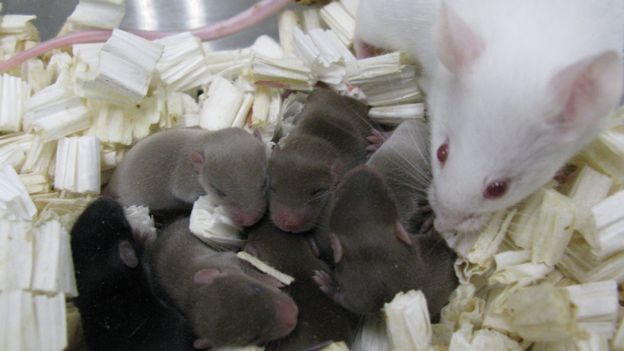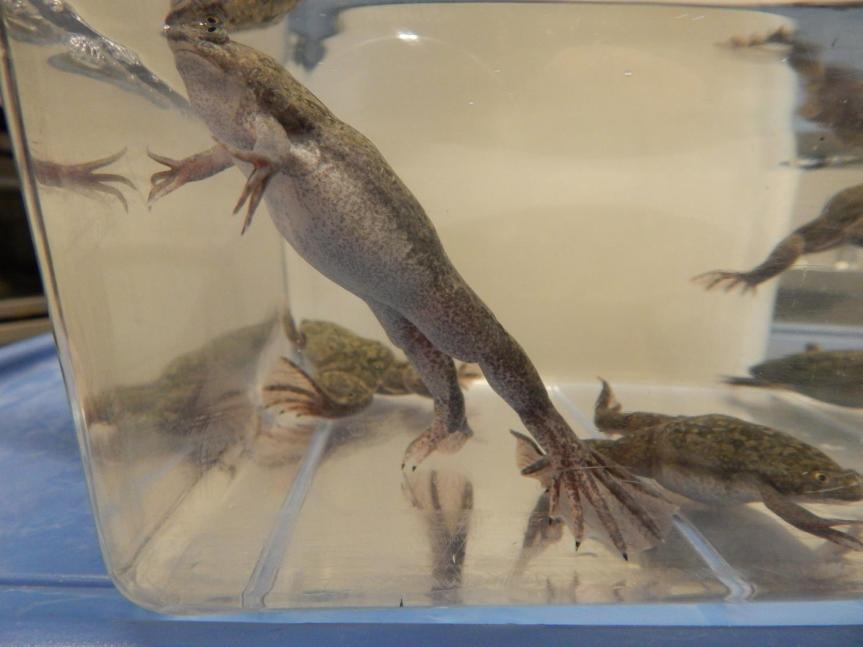Welcome to this week’s Research Roundup. These Friday posts aim to inform our readers about the many stories that relate to animal research each week. Do you have an animal research story we should include in next week’s Research Roundup? You can send it to us via our Facebook page or through the contact form on the website.
- New study finds that mouse sperm stored in space still functions on Earth. Increasingly in the news we read about the upcoming reality of commercial space travel (for example, here and here). Of course, with such advances there is caution with respect to feasibility — and of course imagination with respect to possibilities (e.g., colonizing Mars). With such goals on the horizons, these researchers investigated whether sperm that had been freeze dried, and transported to the International Space Station (ISS) and then back to Earth would be able to produce viable offspring. To accomplish this they used freeze dried mouse spermatozoa — which provided a unique advantage, as the addition of water — maintains the viability of the sperm to fertilize an egg and allows for the sperm to be stored at room temperature. Other sperm when freeze dried do not survive. Microinjection of these “space” sperm into an egg on Earth — produced healthy viable “space offspring”. Moreover, these offspring all grew to healthy adults and were able to produce offspring of their own. This study was published in the Proceedings of the National Academy of Sciences of the USA.

- A team at the University of Portsmouth, has developed a method to reduce the number of male frogs that are required for research. The work was funded by a grant from the NC3R’s, an organization whose mission is to replace animal studies with other methods, reduce animal numbers when possible, and refine procedures to minimize stress for animals. The researchers, in the University’s Institute of Biomedical and Biomolecular Science, developed a more effective method for freezing sperm. This will allow a reduction in animal numbers because a smaller number of male frogs will be able to provide the sperm needed for research studies. The development also increases animal welfare since male frogs will not have to experience stress from transportation due to the fact that their sperm can be cryopreserved and then transported. The process is being tested and refined before implementing widely.

- Modified experimental vaccine protects monkeys from deadly malaria. Researchers at the National Institute of Allergy and Infectious Diseases (NIAID), part of the National Institutes of Health, discovered that a modified version of an experimental malaria vaccine completely protected 4 of 8 monkeys from a malaria parasite, and delayed the first appearance of the parasites in 3 more monkeys. Scientists modified an existing malaria vaccine by including a particular protein, RON2L, so that it closely mimicked the protein complex used by the parasite to infect blood cells. Vaccination with the modified vaccine resulted in more neutralizing antibody, indicating a better quality response to parasitic infection. Additionally, the modified vaccine seemed to protect against other parasite strains that differed from those used to create the vaccine, suggesting that this new modified vaccine may protect against multiple parasite strains. This research will pave the way toward eventual human trials. The study was published in NPJ Vaccines.

- Researchers at the University of Helsinki has found the lymphatic vessels extend into the brain – overturning 300 years of accepted wisdom. By genetically altering mice using the luminescent GFP gene, so that lymphatic vessels glowed under light, Aleksanteri Aspelund found that there were lymphatic vessels in the brain. The research was repeated by Karl Alitalo with the same results. Other researchers have found evidence linking problems with the lymphatic and glymphatic systems to Alzheimer’s; one study in mice showed it could lead to the buildup of amyloid beta in the brain – a key sign of the Alzheimer’s. The study was published in the Journal of Experimental Medicine.

Red fluorescence of the membrane protein aquaporin-4 in an individual with Alzheimer’s (left) and a healthy individual (right). Source: OHSU - Mice help researchers identify genes responsible for a severe congenital heart defect. Congenital heart disease affect up to 1 percent of all live births. Hypoplastic Left Heart Syndrome (HLHS) is a rare congenital heart disease resulting in an inability to effectively pump blood throughout the body. Current treatment involves multiple complex surgeries during the first few years of a child’s life. For some, the surgical interventions improve heart function. For others, it does not, leading to heart failure and the need for heart transplants. It has been known that genetic risk factors play a role in HLHS but specific genes have been hard to identify. Researchers at the University of Pittsburgh Schools of the Health Sciences used fetal ultrasound imaging to look for structural heart defects in genetically modified mice to identify HLHS. Then by comparing the genomes of affected and non affected mice, and confirming using CRISPR technology they found that mutations in two specific genes that interact were required for HLHS., Dr. Cecilia Lo, a professor and the F. Sargent Cheever Chair in Developmental Biology at Pitt says, “Studying diseases with complex genetics is extremely challenging…By understanding the genetics and biology of HLHS, this can facilitate development of new therapies to improve the prognosis for these patients.” This study was published in the journal Nature Genetics.
- The University of Bristol has awarded prizes in its first Animal welfare and 3Rs Symposium. The 3Rs, developed by Russel and Burch in 1954, have advanced the humane treatment of animals used in research by advocating for replacement (aiming to replace animals where possible, with alternatives), to reduce the number of animals used to the minimum required to answer and experimental question and and to refine their experiments to minimise any adverse effects experienced by the animals.These awards went to three research projects that have advanced the 3Rs in their various lines of research.
“The research project that won first prize has developed a refined method for producing aortic aneurysms in mice. An aortic aneurysm is a bulge in a section of the aorta, which is the body’s main artery, and if the bulge ruptures it can cause sudden death. The research team has also developed a new human aortic aneurysm model in the laboratory, potentially replacing the need for animal models, using arteries taken from the discarded umbilical cord of newly born babies.
The second prize was awarded to a research team who has developed a method for giving oral drugs using solutions that mice and rats both like and which avoids the need for restraint and reduces stress in the animals. The research team found that liquid foods such as condensed milk, milkshake and fruit puree baby food are good solutions to use for giving a wide range of drugs.
The final prize was awarded to a research team who has developed photographic techniques that can be used in conscious animals. This new technique has revolutionised preclinical eye research and has markedly reduced the number of animals needed for research studies.”

